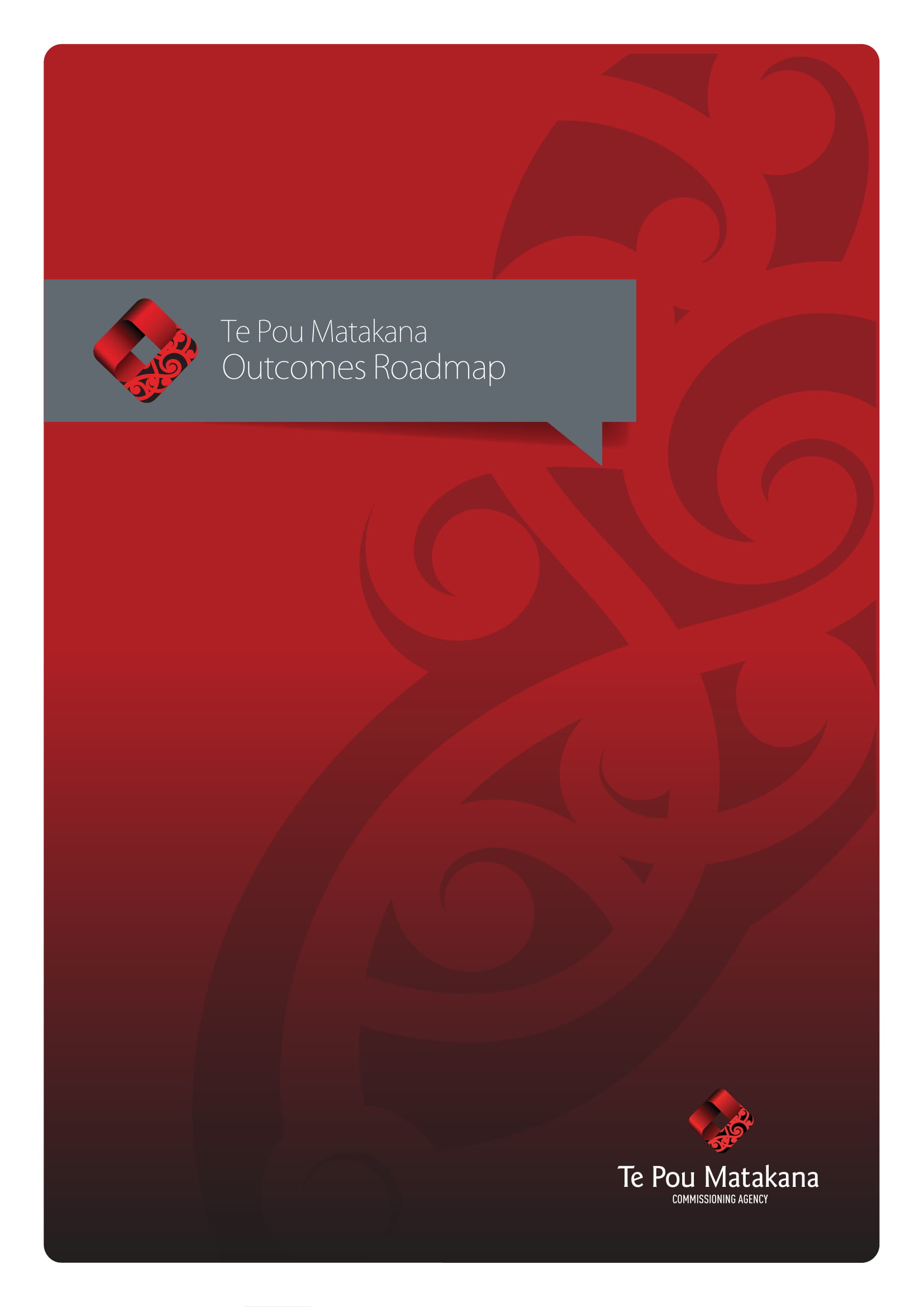Outcomes Roadmap
Te Pou Matakana achieves outcomes for whānau by commissioning three main programmes – Kaiārahi, Whānau Direct and Collective Impact.
The TPM Outcomes Roadmap is an operational document that will outline a set of practical steps that TPM can take to refine and improve its Outcomes Framework over FY15/16 to FY16/17.
TPM Outcomes Framework (also referred to here as its ‘outcomes approach’) is a set of toolsand processes that enable TPM to collect the data needed:
• To prove that TPM is having the impact it intends to have; and
• To improve its outcomes for whānau.
This document takes into account TPM four outcomes principles and seeks alignment to TPK Whānau Results Commissioning Framework, and other leading Māori Outcomes Frameworks.
TPM can refine and improve its Outcomes Framework by taking action across three key areas. These recommendations are aimed at developing each element of TPM outcomes approach.
• Action area #1: Logic Models – TPM will adopt and approve two new Logic Models and adapt them over time:
– The TPM Organisation Logic Model can be used to communicate TPM mission and operating model to external stakeholders;
– The Commissioning Activities Logic Model can be used as an internal operational document that underpins TPM Outcomes Framework. It highlights the outcomes TPM needs to measure to prove its impact.
• Action area #2: Outcome domains, outcomes & indicators – TPM will adopt the six outcome domains outlined in Sir Durie’s Outcomes Framework positioning paper and then encourage the use of a Whānau Outcomes Menu by partners.
• Action area #3: Measurement and assessment approach – TPM will move to a measurement and assessment approach that is consistent across all three programmes and can evolve and improve over time and in consultation with key stakeholders. The approach will draw on four key tools:
– Mataora/Tool A: a consistent whānau engagement, planning and outcomes tool
– Matatū/Tool B: a flexible outcomes reporting tool (drawing on the WhānauOutcomes Menu)
– Matarua Whānau/Tool C: a biannual survey for whānau
– Mata Hoe Tahi/Tool D: a biannual survey for partners.
Together these three action areas will refine and improve TPM Outcomes Framework, adhere to TPM outcomes principles and are appropriate to TPM role in the sector. TPM Outcomes Framework will not be overly prescriptive to partners, and will aim to strike a balance between consistency and flexibility in outcomes measurement.
TPM can execute the Outcomes Roadmap over two phases between now and the end of
FY16/17:
• Phase 1 (September 2015 – December 2015) – Amend and engage: Finalise minor amendments to the FY15/16 AIP and engage all key stakeholders on the proposed changes contained in TPM Outcomes Roadmap.
• Phase 2 (January 2016 -July 2017) – Design and build capacity: re-design and finalise the new TPM Outcomes Framework (including tools and processes recommended in the Roadmap) with feedback from key stakeholders.

